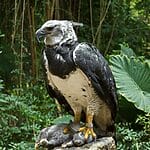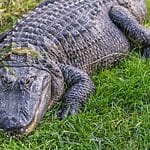13 Interesting Animals in the Mississippi – You Might Not Know
Mississippi is home to a surprising diversity of interesting animals, both on land and in its many bayous and wetlands. The state has black bears, white-tailed deer, bald eagles, hundreds of songbirds, alligators, river otters, and more.
Over 300 species of fish swim in Mississippi’s rivers, streams, lakes, and Gulf coastline. Popular game fish like largemouth bass, crappie, catfish, and bream draw freshwater anglers.

Among the interesting animals in the Mississippi is the American alligator, which finds sanctuary in the state’s swamps and wetlands. Alongside, the Mississippi Sandhill Crane, an endangered species, thrives in the coastal plains, showcasing nature’s resilience.
The rare Mississippi Gopher Frog also calls this region home, symbolizing the delicate balance of its habitat. Within Mississippi’s national parks, tourists can explore the unique fauna, including the charismatic river otters playing in the waterways and the elusive black bears lumbering through the forests.

The diverse avian population, such as bald eagles and prothonotary warblers, captivates birdwatchers with their vibrant plumage and melodious calls. Nature enthusiasts can explore the abundant wildlife thriving in the Mississippi River, including bald eagles soaring overhead, playful river otters frolicking in the water, and majestic blue herons stalking their prey along the shores.
Where to Look for Interesting Animals in the Mississippi -(With Interesting Pictures)
From the meandering waterways to the lush wetlands, the Mississippi hosts a rich tapestry of biodiversity, teeming with unique and captivating animals. Moreover, some of the most interesting animals in Mississippi are given below.
White-tailed Deer (Odocoileus virginianus)
The White-tailed Deer are interesting animals in the Mississippi and are widespread species found across North and Central America, including various regions of the United States. These interesting animals typically inhabit a range of diverse ecosystems, including deciduous forests, grasslands, and brushy areas.
They have reddish-brown coats, white undersides, and distinctive white tails, these deer possess keen senses and impressive agility.

In Mississippi, one of the best places to spot White-tailed Deer is within the state’s extensive network of national forests and wildlife management areas, such as the Homochitto National Forest or the Delta National Forest.
White-tailed Deer are primarily herbivores, feeding on a variety of vegetation including grasses, leaves, fruits, and crops. These deers are listed as “Least Concern” on the IUCN Red List, but they face various localized threats including habitat loss and fragmentation, predation, hunting pressure, and vehicle collisions
Red Foxes (Vulpes vulpes)
Red foxes are intriguing animals found in various habitats worldwide, including forests, grasslands, mountains, and urban areas. In Mississippi, red foxes inhabit a range of environments, from woodlands to agricultural fields, showcasing their adaptability to diverse landscapes.
These interesting animals in the Mississippi are known for their striking appearance, characterized by rusty-red fur, white underparts, and bushy tails with white tips. Among the best places to spot them in Mississippi are wooded areas near riverbanks and open fields where they hunt for prey.

These wild animals are omnivores, consuming a diet consisting of small mammals, birds, insects, fruits, and occasionally scavenged carrion.
They are listed as “Least Concern” on the IUCN Red List due to their large global population, localized declines can occur due to habitat loss, fragmentation, and human persecution.
Southern Flying Squirrel (Glaucomys volans)
The Southern Flying Squirrel, one of the interesting animals in the Mississippi state, inhabits a variety of forested habitats across the southeastern United States, including hardwood and mixed pine forests.
They are predominantly found in wooded areas, these nocturnal creatures also thrive in urban environments, often nesting in attics and tree hollows. These interesting animals in the Mississippi can be recognized by their large, dark eyes and soft, silky fur.

Southern Flying Squirrels possess a distinctive membrane called a patagium that allows them to glide gracefully between trees, earning them the title of “flying” squirrels.“
In Mississippi, the best place to spot these elusive creatures is within mature forests with ample tree cover, particularly in the northern and central regions of the state. Their omnivorous diet consists of nuts, seeds, fruits, and insects, showcasing their adaptability to diverse food sources.
On the IUCN Red List of threatened species, these squirrels are listed as “Least Concern.” Despite this conservation status, Southern Flying Squirrels face threats from habitat loss, fragmentation, and competition with invasive species.
Mississippi Green Water Snake (Nerodia cyclopean)
The Mississippi Green Water Snake is one of the interesting animals in the Mississippi, and found in a variety of aquatic habitats, including rivers, streams, lakes, and marshes, throughout the southeastern United States.
These non-venomous snakes, often mistaken for venomous species due to their vibrant green coloration, possess slender bodies and keeled scales, enabling them to move effortlessly through their watery environments.

While these interesting animals in Mississippi also inhabit neighboring states such as Louisiana, Alabama, and Florida. The best places to spot Mississippi Green Water Snakes within the state are along the banks of slow-moving rivers and in freshwater marshes, where they can be observed basking in the sun or hunting for prey.
Their diet consists mainly of fish, frogs, tadpoles, and small aquatic invertebrates, highlighting their role as essential predators in maintaining ecosystem balance. On the IUCN red list of threatened species, these are listed as “Least Concern.”
Despite their widespread distribution, Mississippi Green Water Snakes face threats from habitat destruction, pollution, and human persecution.
Mississippi Mud Turtle (Kinosternon subrubrum)
The Mississippi Mud Turtle is a noteworthy inhabitant among the interesting animals in the Mississippi state. These interesting animals thrive in a variety of aquatic habitats including slow-moving streams, marshes, and ponds throughout the state.
These turtles can be recognized by their small size and dark, often mottled carapace, Mississippi Mud Turtles possess distinct yellow markings on their necks and limbs. The best places to spot them in Mississippi are along the edges of freshwater bodies, particularly in low-lying wetland areas with abundant vegetation.

These interesting animals in Mississippi are found primarily in the southeastern United States, these turtles also inhabit adjacent wetland areas and flooded rice fields. Their diet consists of aquatic plants, insects, crustaceans, and small fish, showcasing their role as opportunistic feeders within their ecosystem.
On theIUCN red list of threatened species, these interesting animals are listed as “Least Concern.” However, habitat loss, water pollution, and habitat fragmentation pose significant threats to their survival.
Eastern Diamondback Rattlesnake (Crotalus adamanteus) – Most Dangerous Animals
The Eastern Diamondback Rattlesnake, a striking and formidable reptile among the interesting animals in Mississippi, inhabits a range of habitats including pine forests, coastal dunes, and marshy areas throughout the southeastern United States.
These interesting animals in the Mississippi, are recognized for their distinctive appearance, featuring a series of diamond-shaped markings along their body and a characteristic rattle at the end of its tail.

In Mississippi, the best places to spot these venomous reptiles are within the longleaf pine forests of the southern region, where they seek shelter in dense underbrush and fallen logs.
As ambush predators, these venomous snakes prey upon small mammals such as rodents, rabbits, and birds, using their venomous bite to immobilize and consume their prey.
On the IUCN red list of threatened species, these interesting animals are listed as “Least Concern.” Despite their formidable nature, Eastern Diamondback Rattlesnakes face threats from habitat loss, road mortality, and illegal collection for the pet trade.
Western Pygmy Rattlesnake (Sistrurus miliarius streckeri)
The Western Pygmy Rattlesnake is an interesting species of snake found in the southeastern United States, including Mississippi. These interesting animals in the Mississippi are known for their small size and distinctive rattling sound.
These wild animals typically measure around 15 to 22 inches in length, with a distinct pattern of dark blotches or bands running along their light-colored bodies. Their tails feature a small rattle, which they use as a warning signal when threatened.
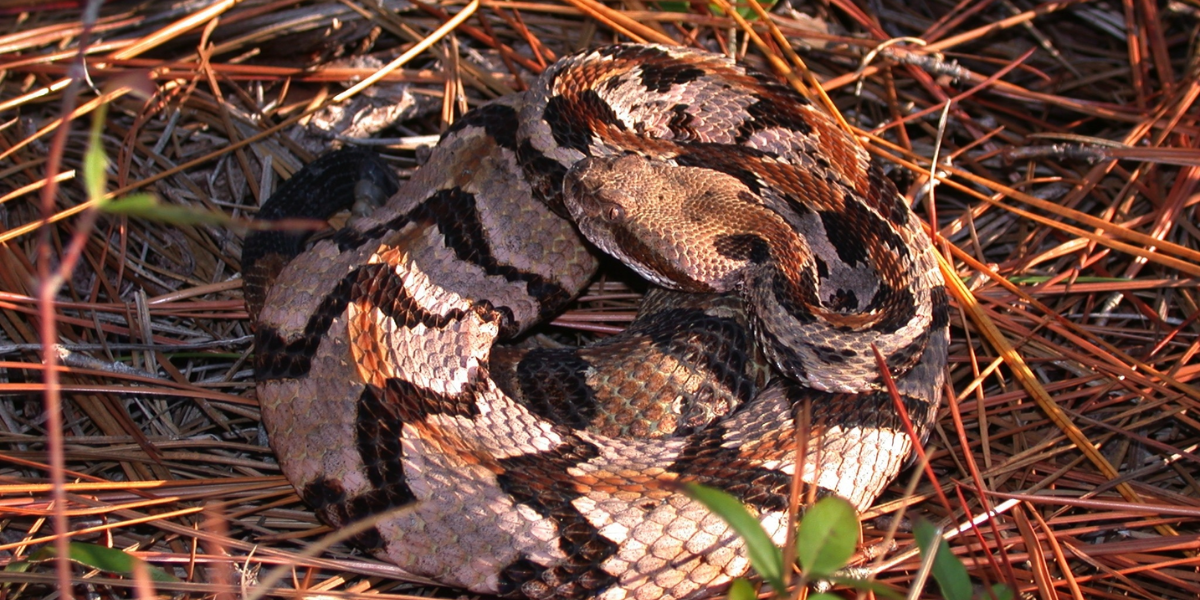
These snakes inhabit a variety of natural environments, including pine flatwoods, coastal scrub, and sandhills. They are particularly adept at navigating through the sandy soils prevalent in their habitats.
One of the prime locations to spot Western Pygmy Rattlesnakes in Mississippi is the De Soto National Forest, which offers a diverse range of habitats suitable for these interesting animals.
On the IUCN red list of threatened species, these snakes are listed as “Least Concern,” Despite their small size and localized habitat preferences.
Some major threats to their population are habitat loss, fragmentation, and degradation. Additionally, they are sometimes victims of road mortality and persecution by humans.
Eastern Wild Turkey (Meleagris gallopavo silvestris)
The Eastern Wild Turkey is a captivating species native to the eastern United States, including Mississippi, and is considered one of the most interesting animals in the Mississippi.
Eastern Wild Turkeys are characterized by their striking plumage, featuring iridescent feathers that shimmer in shades of bronze, green, and copper. Adult males, known as toms or gobblers, boast distinctive fan-shaped tail feathers and prominent wattles, while females, or hens, exhibit more muted coloring and smaller size.
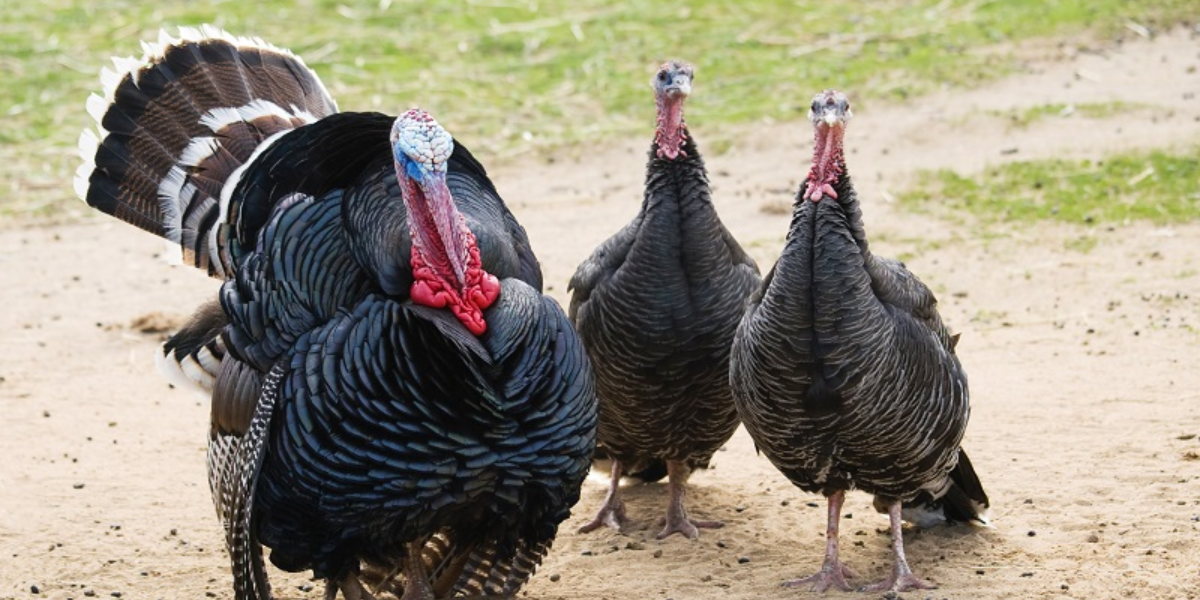
These birds thrive in a variety of habitats ranging from mixed Mississippi’s forests to open woodlands, where they can find ample cover and roosting sites. Eastern Wild Turkeys are particularly fond of areas with abundant food sources like acorns, berries, seeds, and insects, which are essential for their survival.
Mississippi, with its expansive forests and diverse landscapes, provides an ideal habitat for Eastern Wild Turkeys. Visitors to state parks such as Tombigbee State Park or Bienville National Forest are often treated to sightings of these magnificent birds in their natural environment.
The IUCN red list of threatened species marked them as “Least Concern.” Despite their widespread distribution, Eastern Wild Turkeys face conservation challenges, including habitat loss, hunting pressure, and predation.
Feral Hogs (Sus scrofa)
Feral Hogs, also known as wild pigs or wild boars, are interesting animals in the mississippi. Although they are considered invasive and pose significant ecological and agricultural threats.
Feral Hogs typically display a sturdy build with coarse hair covering their bodies, ranging in color from dark brown to black, often with lighter markings. Their heads feature elongated snouts and sharp tusks, which they use for rooting and defense against predators.
These animals are highly adaptable and can thrive in various habitats, including forests, swamps, grasslands, and agricultural fields.
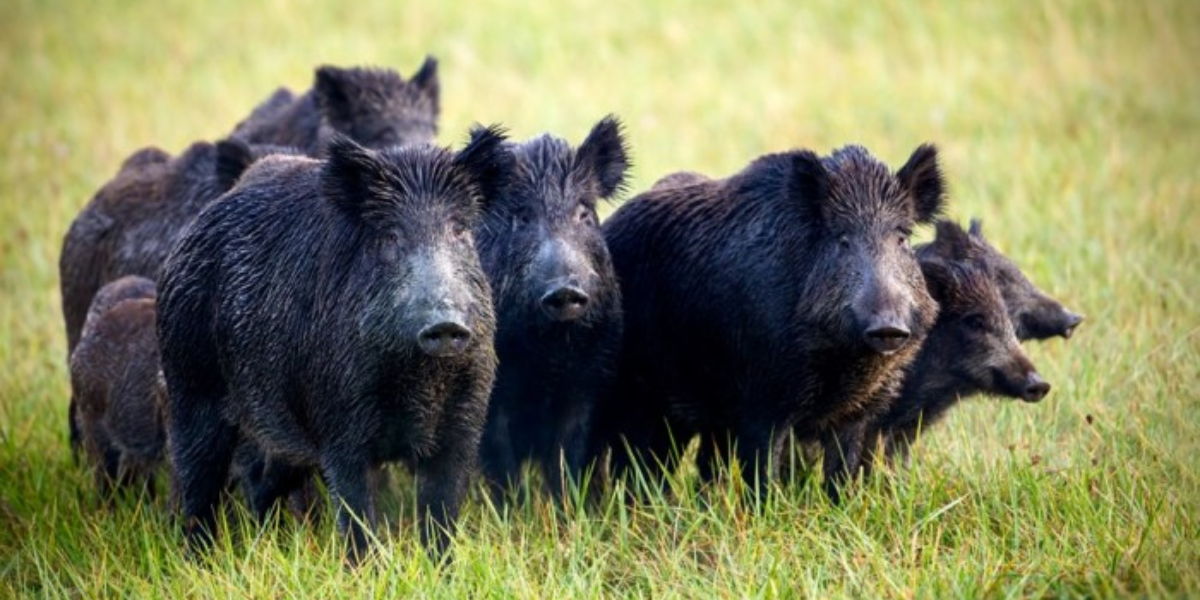
They are prolific breeders and have a remarkable ability to forage for food, which contributes to their success in colonizing diverse environments. Moreover, feral hogs eat plants, leaves, and seeds, however, they also hunt and eat deer fawns.
Mississippi’s extensive forests, marshlands, and rural areas provide ample opportunities to spot Feral Hogs. They are particularly prevalent in regions with dense vegetation and access to water sources, such as the Delta region and the Pine Belt.
On the IUCN red list these interesting wild pigs are listed as “Least Concern” They are considered an introduced species rather than a native one.
However, their population poses significant threats to native wildlife and ecosystems through habitat degradation, competition for resources, and predation on native species’ nests and young.
Marsh Rice Rat (Oryzomys palustris)
The Marsh Rice Rats are interesting animals in the Mississippi, known for their unique adaptations and habitat preferences. These rodents are primarily found in marshy habitats, including coastal marshes, wetlands, and swamps, where they can access abundant vegetation and water sources.
Marsh Rice Rats typically exhibit a brownish-gray fur coat with a slightly lighter underbelly. They have relatively large ears and eyes compared to other rat species, which aid in their nocturnal foraging habits and help them navigate their marshy habitats under cover of darkness.

Their preference for wet environments helps them to thrive in areas with high humidity and dense vegetation. Mississippi’s coastal marshes and wetlands, such as those found in the Pascagoula River Basin and the Grand Bay National Estuarine Research Reserve, are prime locations to spot Marsh Rice Rats in their natural habitat.
The IUCN Red List currently categorizes the Marsh Rice Rat as a species of “Least Concern,” However, local populations may be vulnerable to habitat loss, degradation, and pollution, particularly in regions experiencing rapid urbanization and agricultural expansion.
Bottlenose Dolphins (Tursiops truncatus)
Bottlenose Dolphins are captivating marine mammals known for their intelligence, playful behavior, and widespread distribution along coastlines and in open waters around the world, including the Gulf of Mexico, which borders Mississippi.
These highly adaptable animals inhabit a variety of marine environments, including coastal waters, bays, estuaries, and offshore habitats where they can find an abundant food supply. Bottlenose Dolphins are characterized by their sleek, torpedo-shaped bodies, distinctive bottle-shaped snouts, and curved dorsal fins.

They typically range in color from light gray to dark gray on their backs, fading to a lighter shade on their undersides. In Mississippi, one of the best places to spot Bottlenose Dolphins is along the state’s coastal areas, including the barrier islands such as Horn Island and Ship Island, as well as in the deeper waters of the Gulf of Mexico.
The IUCN Red List classified Bottlenose Dolphins as a species of “Least Concern,” However, local populations may be affected by habitat degradation, pollution, climate change, entanglement in fishing gear, and disturbances from human activities such as boat traffic.
Some Interesting Bird Species in the Mississippi State
The Mississippi River is home to a diverse array of fascinating bird species that inhabit vast wetlands, forests, and riverbanks. Some of the most interesting ones are given below.
Red Bellied Woodpecker (Melanerpes carolinus)
The Red-bellied Woodpecker is a captivating species among the array of interesting animals inhabiting Mississippi’s forests and woodlands. These interesting animals in the mississippi are commonly found in a variety of wooded habitats, including deciduous forests, mixed woodlands, and suburban areas with mature trees.
They are often found in areas with mature trees, where they can forage for insects and nest in cavities excavated in dead or decaying wood.

Red-bellied Woodpeckers showcase a unique blend of colors, with a black-and-white barred back, a bright red crown and nape, and a pale belly that may appear faintly red in certain lighting conditions. Their zebra-like patterning and vibrant red accents make them easily recognizable among other woodland birds.
In Mississippi, prime locations to spot Red-bellied Woodpeckers include state parks such as Tishomingo State Park and De Soto National Forest, where mature forests and ample foraging opportunities abound.
The IUCN Red List currently categorized the Red-bellied Woodpecker as a species of “Least Concern,” reflecting its stable population status and widespread distribution across its range.
However, like many woodland species, Red-bellied Woodpeckers face threats such as habitat fragmentation, deforestation, and pesticide use, which can impact their nesting sites and food sources.
Brazilian free-tailed Bat (Tadarida brasiliensis)
The Brazilian free-tailed bat is a captivating species that contributes to the rich diversity of interesting animals in Mississippi. These bats are known for their wide distribution across the Americas, including the southern United States, where they inhabit a variety of natural and human-made structures.
Brazilian free-tailed bats prefer warm climates and roost in caves, rock crevices, bridges, and buildings, making them adaptable to both rural and urban environments.
These interesting animals in the mississippi are characterized by their distinctive tail, which extends beyond the edge of their tail membrane, giving them a “free-tailed” appearance.

They have sleek, dark brown fur and large ears, which aid in their echolocation abilities and navigation during flight.
One of the best location to spot Brazilian free-tailed bats is in the Tunica Hills Wildlife Management Area, where they roost in limestone caves and rocky outcrops, providing visitors with an opportunity to observe these fascinating creatures in their natural habitat.
The Brazilian free-tailed bat is listed as a species of “Least Concern” on the IUCN Red List. However, localized threats such as habitat destruction, pesticide use, and disturbance of roosting sites can impact their populations in specific regions.
Frequently Asked Questions about Interesting Animals in the Mississippi
What are the most dangerous animals in Mississippi?
Cottonmouth, Rattlesnake, Brown recluse spider, and Pygmy rattlesnake are the most dangerous animals in the Mississippi.
What are some predators in Mississippi?
American alligators, bobcats, black bears, and coyotes are some predators in Mississippi.
What is Mississippi known for animals?
American alligator, Bobcat, and American black bear are some common animals in Mississippi.
Does Mississippi have wolves?
No, there are no wolves in Mississippi.
What is the largest animal in the Mississippi River?
Gulf sturgeon is the largest fish in Mississippi river.



